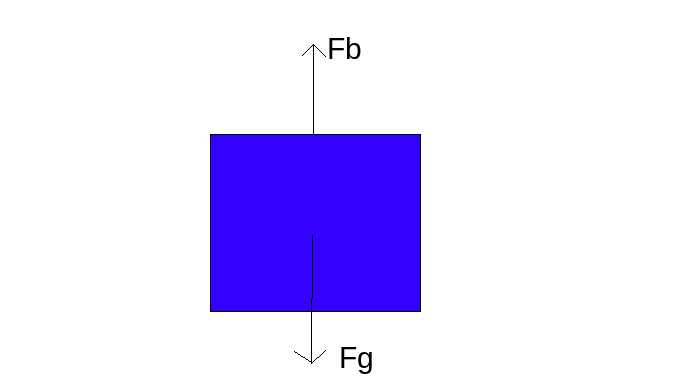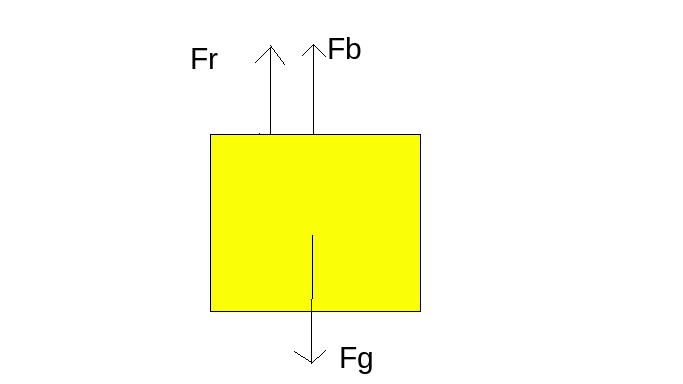K
Krish Gupta
Daniella Garcia-Loos
AP Physics 2 🧲
61 resourcesSee Units
Fluids and Free-Body Diagrams
Force Body Diagrams, commonly known as FBDs, are one of the most powerful tools in a physicist's kit. FBDs in this course aren’t any tougher than the FBDs in your first-year physics classes. However, in this class, you won't always be awarded points for drawing FBDs, because you are expected to include them. In this course, you will have to use FBDs to solve a further problem or give a nuanced explanation of a scenario.
You should be familiar with the normal force and the force of gravity. Another force that comes up on almost all FBDs in Physics 2 is the buoyant force. The buoyant force will be explored in much more detail in the next section. For now, know that the buoyant force is written as Fb and acts mostly on objects in fluids in the opposite direction as gravity.
The normal force only comes into play if the object is thrown and falls all the way to the bottom of the fluid container. Remember that normal force is a contact force, so the object has to be stable and in contact with the sea floor to be experiencing the normal force!
Another force that may come up is the resistive force. The resistive force in fluids is much like air resistance in Physics 1 problems. However, the resistive forces in fluids can’t be always ignored like air resistance. The resistive force acts in the direction opposite to the motion of the object and depends on the velocity of the object—so if the object is at rest there is no resistive force, but the faster the object moves in the fluid, the greater the resistive force will be.
🟦Blue: FBD for an object floating in water
An object floating in water experiences the gravitational force due to it's weight and a buoyant force as it's in water ( a fluid).
🟨Yellow: FBD for an object sinking in water
The object experiences a gravitational force due to the Earth, a buoyant force since it's in a fluid a resistive force because it's in motion in a fluid.
🟪Pink: FBD for an object that has sunk to the bottom of the water
The object experiences the gravitational force due to the Earth, a buoyant force since it's in a fluid and a normal force because it's in contact with the surface (the bottom of the water).



Here are the steps for drawing a free-body diagram (FBD) for a fluid problem:
- Identify the object of interest. This is the object for which you are trying to draw the FBD.
- Identify the forces acting on the object. These may include the weight of the object, the buoyant force acting on the object, and any other forces that are applied to the object, such as friction or tension.
- Draw a reference line to represent the object. This should be a horizontal line, as the object is in a fluid.
- Draw a vector to represent each force acting on the object. The vectors should be drawn in the direction in which the force is applied, and their length should be proportional to the magnitude of the force.
- Label each force vector with the symbol and magnitude of the force. For example, you might label the weight of the object as "W" and the buoyant force as "Fb."
- Add any necessary notes or annotations to the FBD. For example, you might include the density of the fluid or the volume of the object.
- Check the FBD to ensure that it is complete and accurate. Make sure that all forces acting on the object are represented, and that the forces are balanced (the sum of the forces is zero).
Browse Study Guides By Unit
💧Unit 1 – Fluids
🔥Unit 2 – Thermodynamics
⚡️Unit 3 – Electric Force, Field, & Potential
💡Unit 4 – Electric Circuits
🧲Unit 5 – Magnetism & Electromagnetic Induction
🔍Unit 6 – Geometric & Physical Optics
⚛️Unit 7 – Quantum, Atomic, & Nuclear Physics
📆Big Reviews: Finals & Exam Prep
📚Study Tools

Fiveable
Resources
© 2025 Fiveable Inc. All rights reserved.